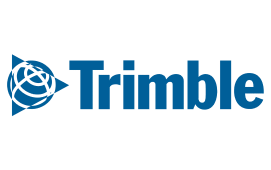The Health of your Estimating Department
Four Vital Signs to determine your Estimating Departments Condition
When someone goes to the emergency room (ER), they’re typically first seen by a triage nurse who records the person’s vital signs, such as temperature, blood pressure, heart rate, and respiratory rate. Blood may be drawn, and the patient may also be sent to have an ultrasound, x-ray, or CT scan. The patient's vital signs are an indication of his or her health and condition. The medical team must have this information to improve the condition of the patient.
Similarly, electrical contractors must take a close look at their estimating department’s vital signs every so often. Numbers aren’t everything, but they do tell a story. Numbers can indicate how well you are doing — or how poorly you are performing
Vital Sign No. 1 ― Total Volume of Bids
Your total bid volume is the first number to analyze. The bid totals should also be analyzed by each estimator, each sector, and each market. These numbers will provide valuable information when compared to another important vital sign: the bid win ratio.
If you are estimating a large percentage of projects in a certain sector with a low win ratio percentage, you might consider shifting your bidding strategy. In some markets, a contractor must produce a high volume of estimates. Regardless of your market and geographic location, you should know your optimum bid volume. Of course, you must bid on the projects your company performs best. Comparing the total number of projects and the average bid price from year to year will also indicate how well you may be bidding.
Vital Sign No. 2 ― Bid Win Ratio
A higher bid win ratio means efficiency in your estimating department. One of the frustrating components of contracting is estimating a project perfectly and still not being the low bidder. Sometimes, the lowest bidder is the contractor who made the biggest mistake. Tracking your company’s annual bid win ratio (sometimes referred to as win percentage) will help you determine the estimating team's best project selection and accuracy. The bid win ratio is one indicator of how well each estimator is performing. Those with a high bid win ratio can be praised and rewarded. When an employee’s bid win ratio is lower than expected, it may be an indicator that he or she is struggling. The struggling estimator can be provided with additional training and coaching. Investing in your employees usually pays huge dividends.
In addition, determine your bid win ratio by sector. Is it residential, commercial, industrial, or institutional? Focus on the sector where you are most successful; avoid projects where the competition is fierce and profit margins are lower.
Vital Sign No. 3 ― Regular Meetings
When properly organized and executed, meetings are invaluable. Every contractor must establish meetings and a protocol to function at the highest level. Properly run meetings will provide guidance, problem-solving, and accountability.
- Weekly meeting. This meeting will ensure that all estimates are on schedule. It’s also a great time to aid any team member that needs help in completing an estimate.
- Monthly meeting. This meeting can provide a review of projects that have been previously bid, which you do not yet know the status of award.
- Bid day meeting. This meeting must focus on the completeness of the estimate in relation to the contract documents, schedule, and scope of work. By including all estimators in this meeting, everyone’s experience can contribute to a project’s final price.
- Project turnover meeting. One purpose of an estimate is to provide a detailed, organized plan to execute a project profitably. A skilled estimator will properly organize the estimate by buildings, floors, systems, and areas. This organization is purposed for estimate analyzing and checking. The project manager and foreman should be provided with detailed materials lists reports based on the project’s structure. These reports are necessary for the efficiency and onsite organization of the project. This meeting is vital for a profitable and efficient project kickoff.
- Post-project meeting. There is nothing better than historical data when looking to improve your estimating process/accuracy. The role of the estimator is accuracy, and the role of the project manager is efficiency. A post-project meeting provides the opportunity to check how well the estimator and project manager performed. It is also the best way to provide feedback from the field to the estimator for improved accuracy.
Vital Sign No. 4 ― Database Protocol
Estimating software is now a part of almost every contractor’s office. Several brands are prevalent today. Each software program has varying features, and every contractor must research and find the software that best fits their operations and market.
One thing that all estimating software programs have in common is a database. The material database is the heartbeat of any software. When software is used properly, the estimator will spend 65% of his or her time performing takeoffs and doing data entry. A healthy database arrangement will provide the greatest efficiency in estimating. The contractor must assign an employee to manage the database. This person should have the knowledge and expertise to best manipulate the data. As products change and new wiring methods are developed, a contractor must maintain his estimating software’s database so it provides an estimate that is as accurate as possible. Having a plan in place that allows each estimator to provide insightful ideas to the database manager is key to using estimating software as designed.
The final diagnosis
Like a triage nurse in the ER, estimating departments need to monitor their vital signs to determine what condition they’re in. Constantly striving to improve processes and outcomes is a beneficial practice — even if your department appears to be operating at optimal performance — and can ultimately work to improve your company’s overall health.

Contact Us
Schedule a Consultation
(*) - Required field
Our Partners




